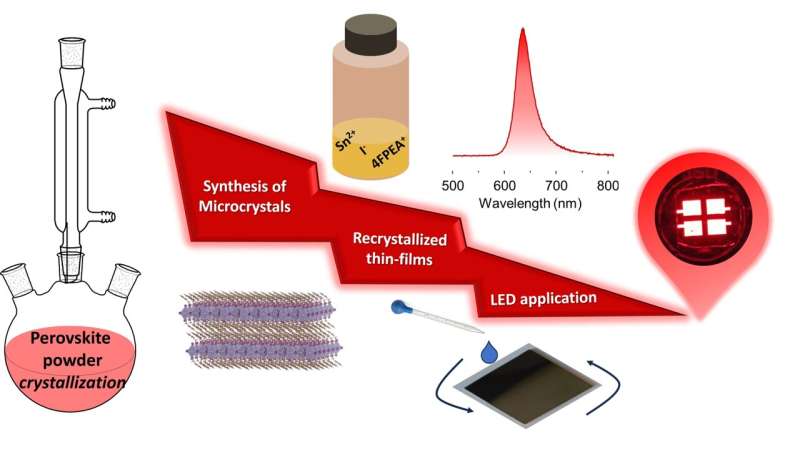This article has been reviewed according to Science X's editorial process and policies. Editors have highlighted the following attributes while ensuring the content's credibility:
fact-checked
trusted source
proofread
A method for production of organic–inorganic tin halide perovskites for optoelectronic devices

Researchers at the Institute for Advanced Materials at the Universitat Jaume I in Castelló have created a method for synthesizing organic-inorganic tin halide perovskites and generating thin films or coatings from them, which, when deposited on substrates, have optoelectronic properties that are useful for the creation of devices such as perovskite-based LEDs (PeLEDs).
The method developed by the team consisting of Dr. Samrat Das Adhikari and the doctoral student, Jesús A. Sánchez Diaz, and led by the researcher Iván Mora Seró, exhibits excellent photoluminescence and stability properties that are suitable for commercial application in the field of optoelectronic devices (solar cells, LEDs, etc.). It has been validated experimentally in the laboratory and is protected by a patent, ready for development and adaptation for particular applications through agreements.

The study was published in the Proceedings of the International Conference on Emerging Light Emitting Materials.
The invention is part of the European project DROP-IT of the H2020 program (Future and Emerging Technologies), led by the University of Valencia, which ends this year. As explained by Iván Mora Seró at the beginning of the project, "The aim is to study materials such as halide perovskites, but which are lead-free and therefore less toxic, in order to create all kinds of electronic devices that can be printed on flexible substrates, such as LEDs, photodectors or other optoelectronic devices." The teams led by Beatriz Julián and Víctor Sans also participated in the project.
More information: Samrat Das Adhikari et al, Robust, low-cost, and environmentally stable tin iodide perovskite with enhanced LED performances, Proceedings of the International Conference on Emerging Light Emitting Materials (2023). DOI: 10.29363/nanoge.emlem.2023.038
Provided by Asociacion RUVID





















